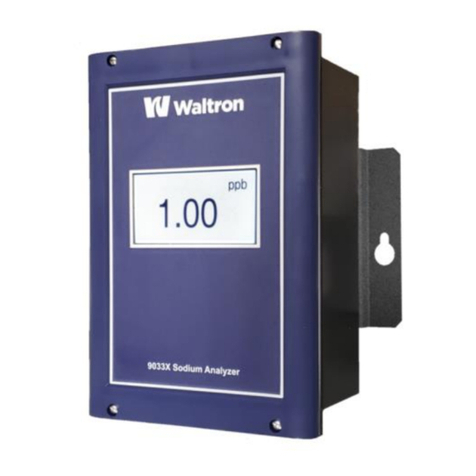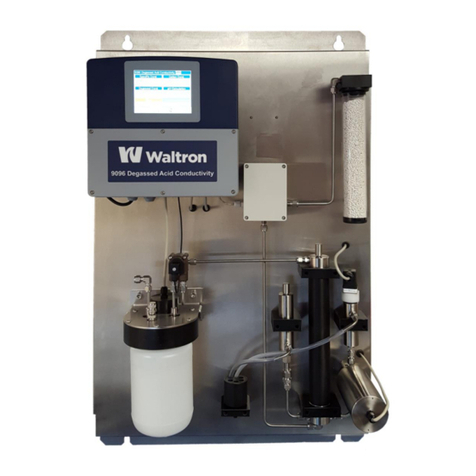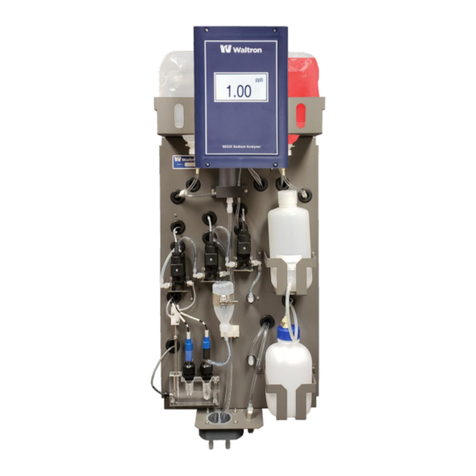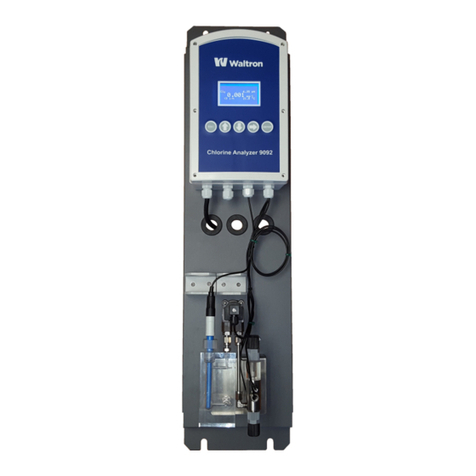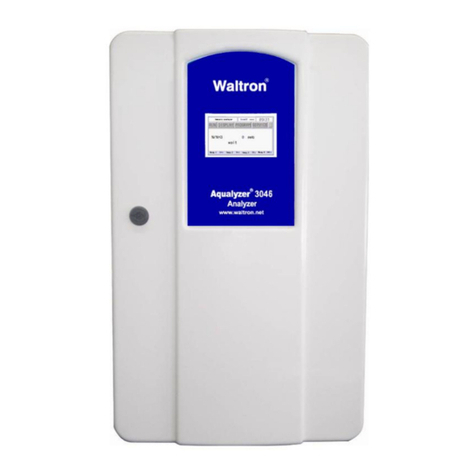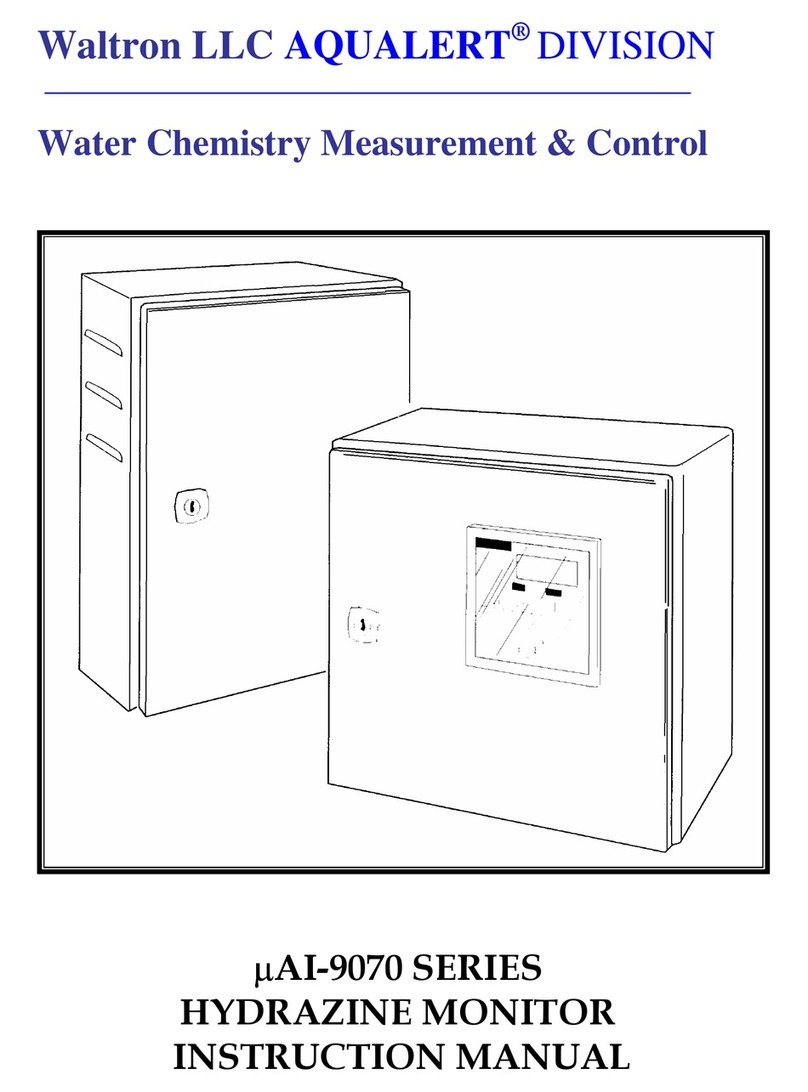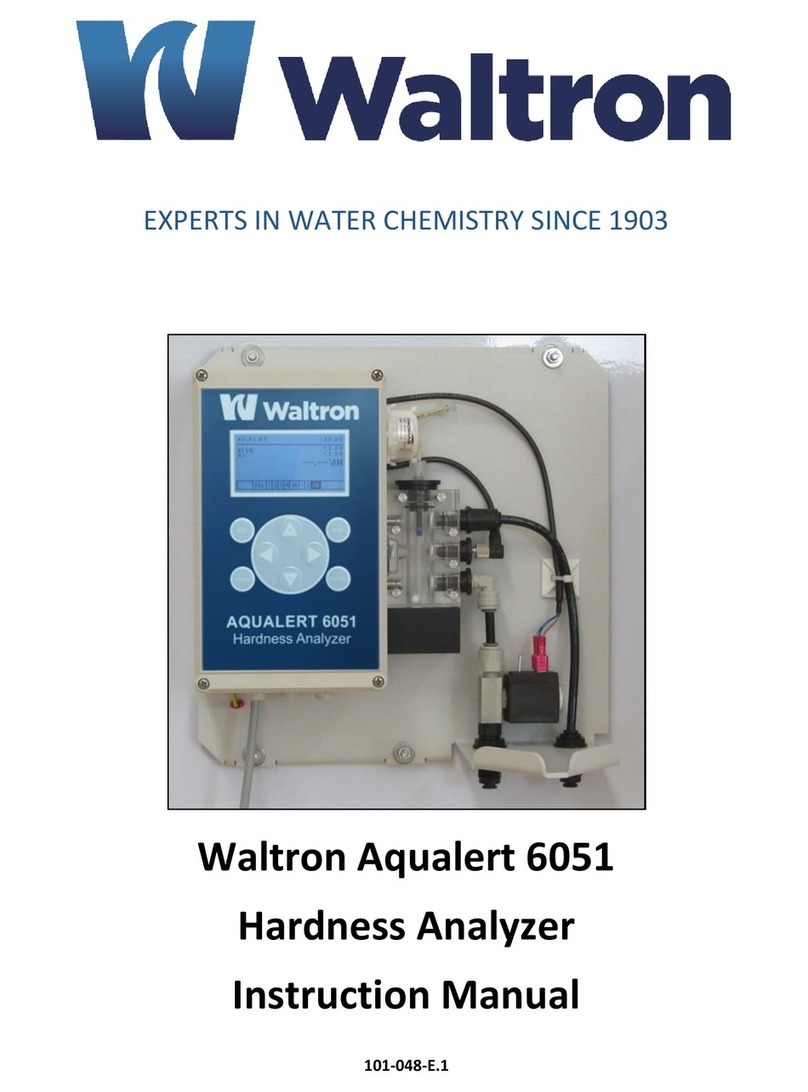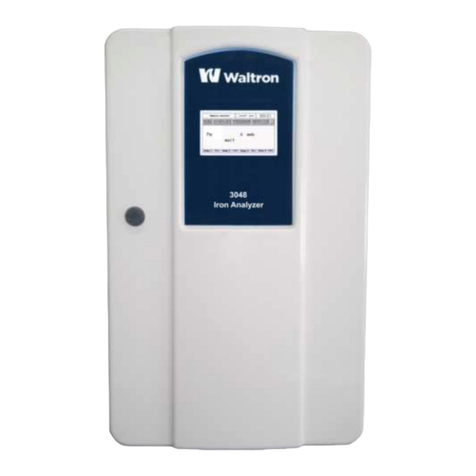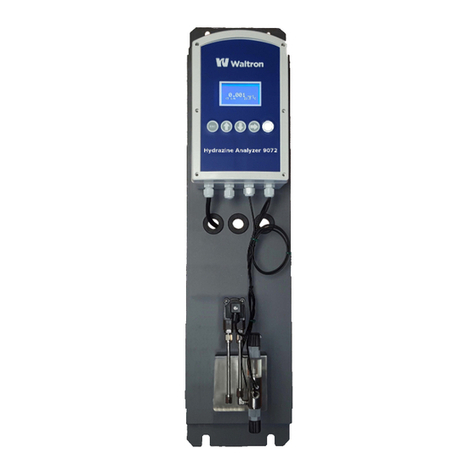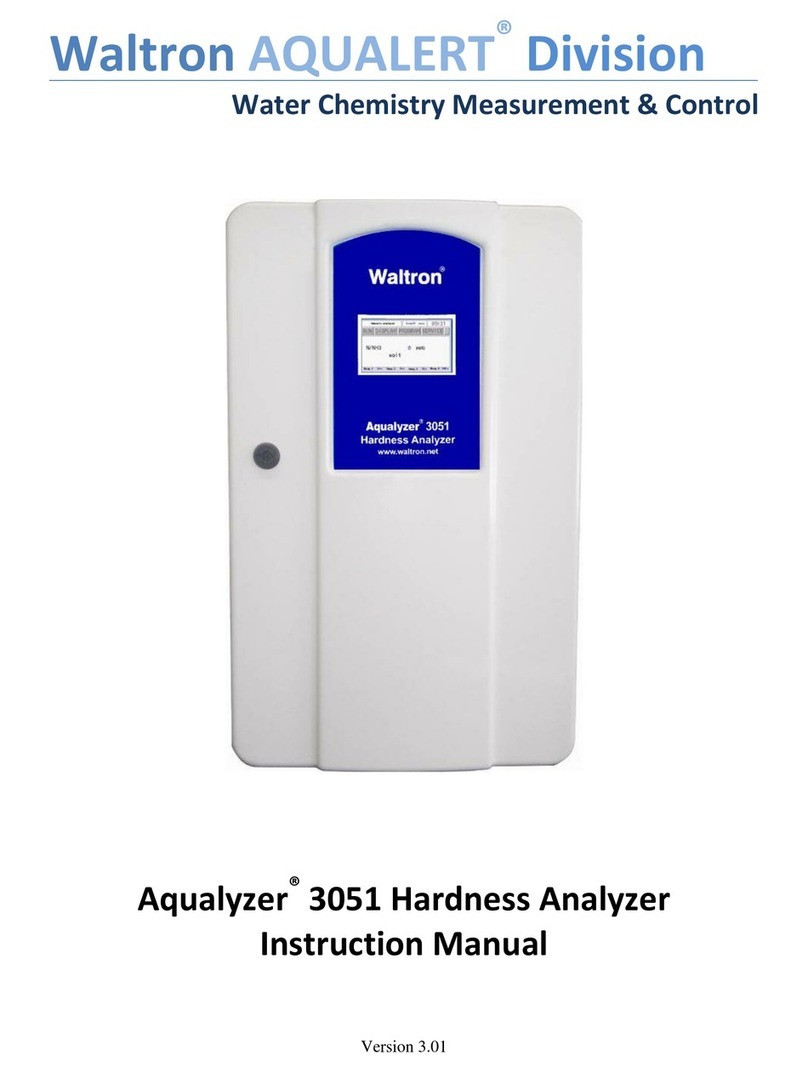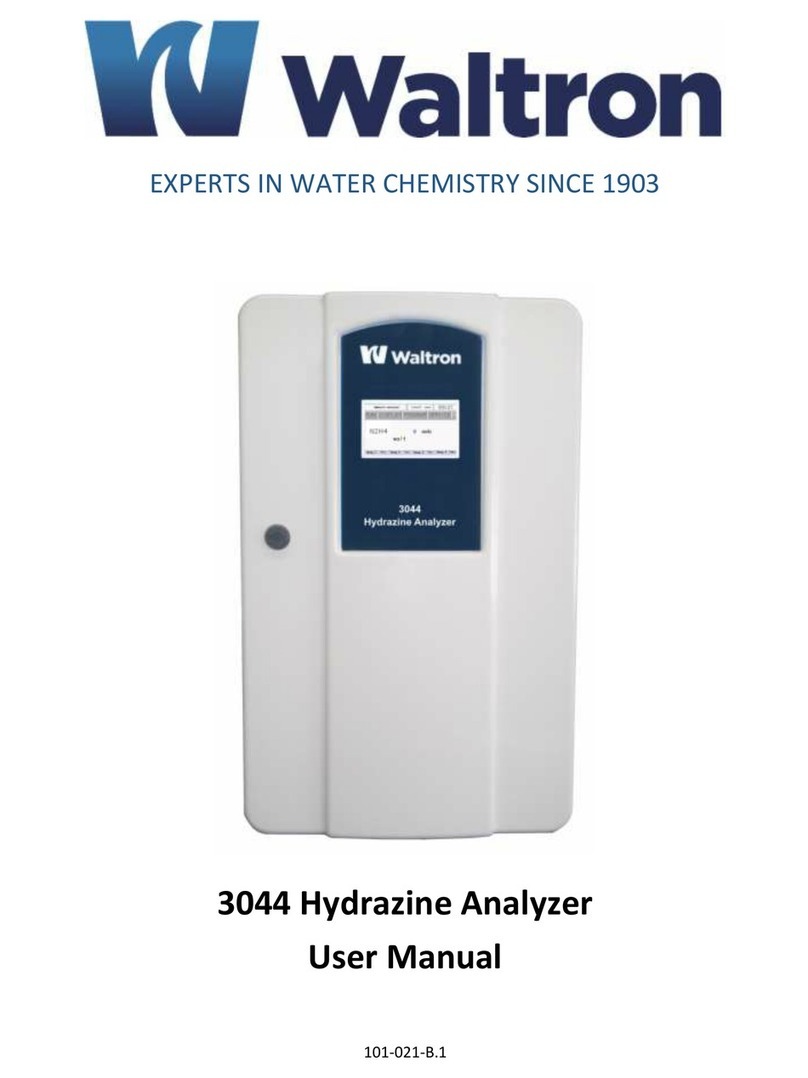
7
1INTRODUCTION
1.1 AREAS OF APPLICATION
The Waltron 9091C Dissolved Hydrogen Analyzer is used for the automatic, continuous
measurement and control of hydrogen concentration in aqueous solutions. Examples of
the applications of the unit include the determination of residual hydrogen concentration
in boiler feedwater in power plants, the monitoring of hydrogen concentration in the
primary loop of a nuclear power plant, the monitoring of hydrogen concentration during
the denitrification (removal of nitrate NO3) of drinking water, or the indication of the
hydrogen concentration during the catalytic reduction of oxygen on noble metal surfaces
in water treatment plants etc. The measuring range is between some µg/l (trace areas) up
to saturation level mg/l range.
The hydrogen in a water/steam loop of a power plant is mainly produced by the reaction
between iron and water or steam. Thus the hydrogen concentration gives quantitative and
qualitative evidence of the rate of corrosion and the buildup or deterioration of the
protective oxide layer inside pipes and boiler tubes. The hydrogen concentration ranges
between a few µg/l (normal operating conditions) and several hundred µg/l during the
start-up.
In the primary loop of a nuclear power plant the hydrogen should reduce or mitigate the
oxygen which is produced by radiolysis. As a result the electro-chemical corrosion
potential (ECP) of the tube material is reduced. In nuclear power plant applications,
hydrogen is added to scavenge oxygen or recombine with the oxygen that is produce by
radiolysis. In the pressurized water reactor (PWR) primary loop, hydrogen is measured
in the range 25-50cc/kg. Hydrogen in boiling water reactors (BWR) feedwater and
reactor coolant is measured in ppm’s. Hydrogen in feedwater is typically 0-2ppm and
hydrogen in reactor coolant water will vary between 0.1-0.5ppm.
The dissolved hydrogen analyzer can also be used in drinking water applications for the
denitrification of drinking water. The denitrification is based on the process in which
hydrogen is added to nitrate polluted water. The contaminated water flows through a
solid bed reactor filled with a noble metal catalyst. In result, water and nitrogen are
produced.
The catalytic reduction of oxygen is based on the reaction between dissolved oxygen in
water and hydrogen in the presence of a noble metal surface (oxyhydrogen gas reaction).
Typical applications for oxygen free water are in breweries, the beverage industry and in
the preparation of boiler feedwater in power plants.
It is important for the correct operation of various processes to dose the exact amount of
hydrogen.
